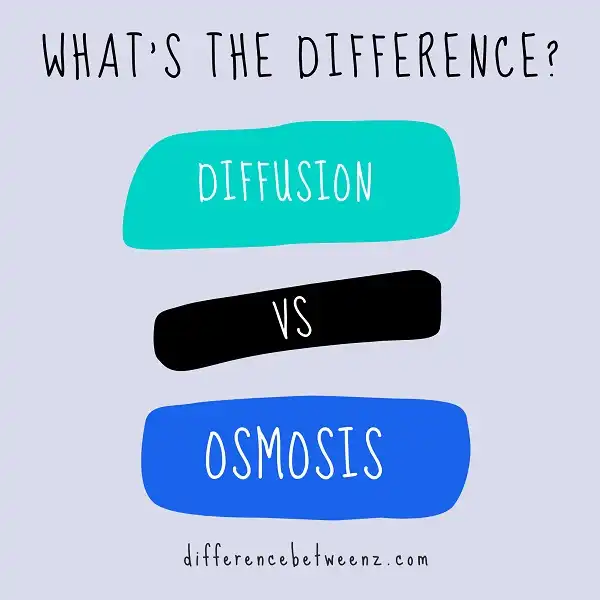Diffusion and osmosis are two important processes that occur in cells. Though they are related, there is a key difference between the two. diffusion refers to the movement of molecules from an area of high concentration to an area of low concentration, while osmosis refers to the movement of water through a semipermeable membrane. In this blog post, we will explore the differences between diffusion and osmosis in more detail. We will also look at some examples of each process in action.
What is Diffusion?
Diffusion is the movement of particles from an area of high concentration to an area of low concentration. This can happen in both gases and liquids, and it is a vital process in many biochemical reactions. In order for diffusion to occur, there must be a gradient of concentration, meaning that the particles must be moving from an area where they are more concentrated to an area where they are less concentrated. The higher the concentration gradient, the faster the diffusion rate will be. Diffusion is often used in industrial applications, such as when mixing two substances together or when purifying a gas. It can also be used for medical purposes, such as when delivering oxygen to cells through the process of osmosis.
What is Osmosis?
Osmosis is the diffusion of water across a semi-permeable membrane. In other words, it is the movement of water from an area of high concentration to an area of low concentration. This process occurs because water molecules are attracted to other molecules, such as salt. As a result, they tend to move into areas where there is a higher concentration of these molecules. Osmosis is a vital process in living organisms, as it helps to regulate the distribution of water within the body. It also plays an important role in plant life, as it helps to transport water and minerals from the roots to the leaves. Without osmosis, many plants would quickly die of thirst.
Difference between Diffusion and Osmosis
The primary difference between diffusion and osmosis is that diffusion is the movement of particles from an area of high concentration to an area of low concentration. Osmosis, on the other hand, is a special type of diffusion that occurs when water molecules move from an area of high concentration to an area of low concentration. In addition, osmosis can only occur when there is a semi-permeable membrane present. Another important difference between diffusion and osmosis is that diffusion does not require energy, while osmosis does. This is because water molecules are able to pass through the semi-permeable membrane without the need for energy. Finally, diffusion generally occurs at a faster rate than osmosis.
Conclusion
Diffusion and osmosis are both important processes that occur in cells, but they have different effects. Osmosis is the process of water moving through a selectively permeable membrane to equalize the concentration of solutes on either side of the membrane. This occurs because water molecules are attracted to other water molecules and will move across the membrane to achieve equilibrium. diffusion is the movement of particles from an area of high concentration to an area of low concentration until equilibrium is reached. In order for diffusion to occur, there must be a difference in concentrations between the two areas.


